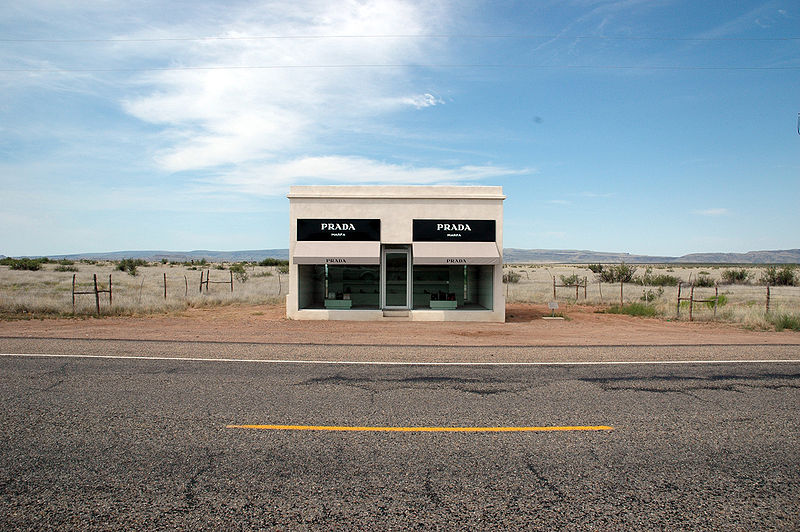 Have you heard of Prada, Marfa? It is a (fake) Prada store in the middle of nowhere, 35 miles north of Marfa, Texas. It was designed as some kind of art installation (I don’t get art, but whatever).
Have you heard of Prada, Marfa? It is a (fake) Prada store in the middle of nowhere, 35 miles north of Marfa, Texas. It was designed as some kind of art installation (I don’t get art, but whatever).
But for purposes of the First Amendment, is it art (protected) or an advertisement (less-protected commercial speech)?
Nearly eight years after opening, Prada Marfa has been classified by the Texas Department of Transportation as an “illegal outdoor advertising sign” because it displays the Prada logo on land where that is prohibited. This could lead to forced removal of the installation, although the department has not yet decided what action it will take.
For the artists, the logo is essential to the meaning of the work. “It was meant as a critique of the luxury goods industry, to put a shop in the middle of the desert,” Mr. Elmgreen said.
From the state’s perspective, the logo is defined by state and federal law as a sign. And because the “sign” sits on unlicensed land bordering federal highway U.S. 90 and lacks a permit, it violates the 1965 Highway Beautification Act signed by president Lyndon B. Johnson and championed by his wife, Lady Bird Johnson.
Prada Marfa’s artists have never considered obtaining a permit because they reject the idea that their piece is an advertisement. Miuccia Prada, Prada’s chairman, permitted the artists to use her brand’s logo. She also picked and provided the shoes. But there is, Mr. Elmgreen noted, “no commercial relationship.” The $80,000 project was paid for by the New York nonprofit Art Production Fund in collaboration with Ballroom Marfa, a local contemporary art gallery.
So is it art, or advertisement?